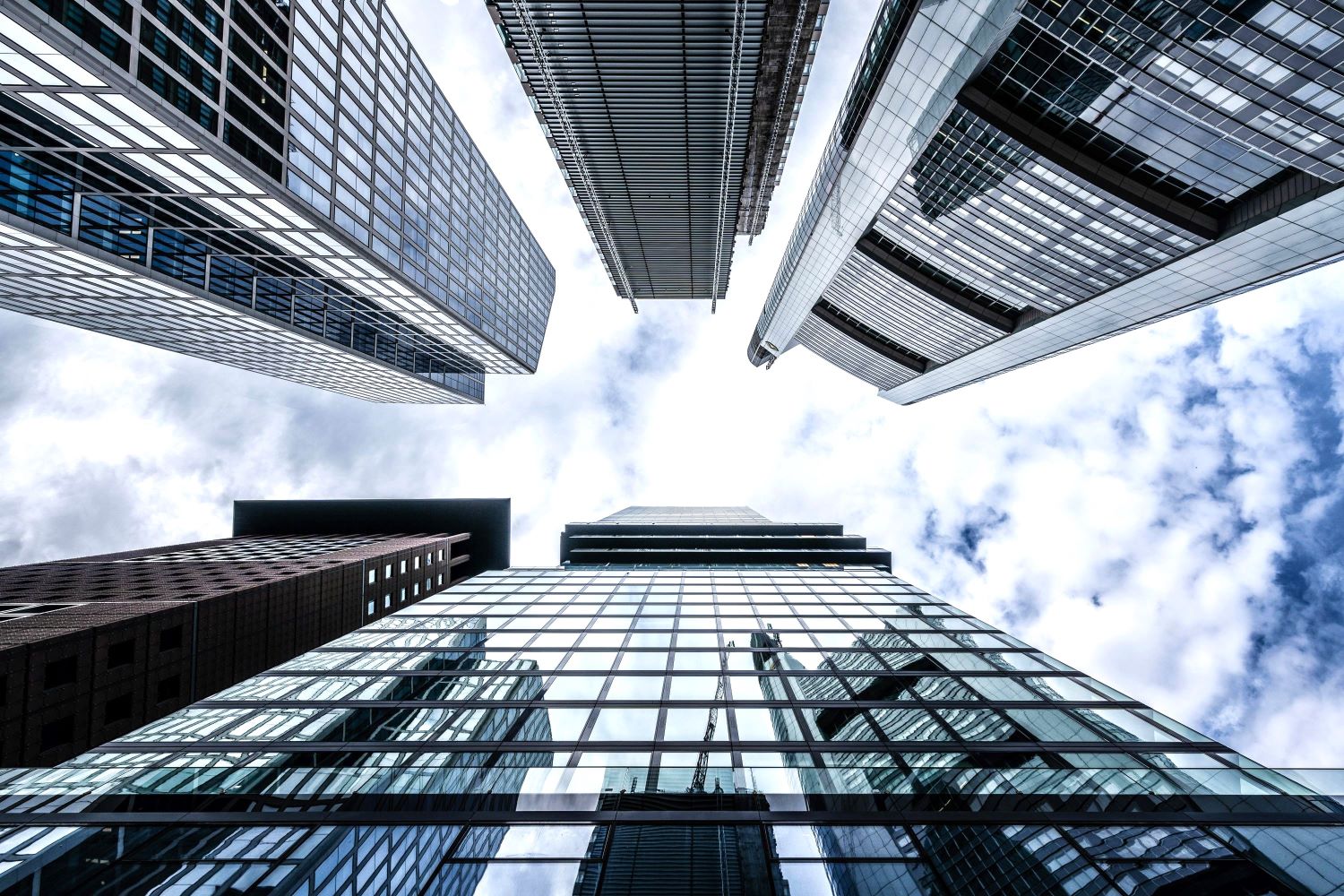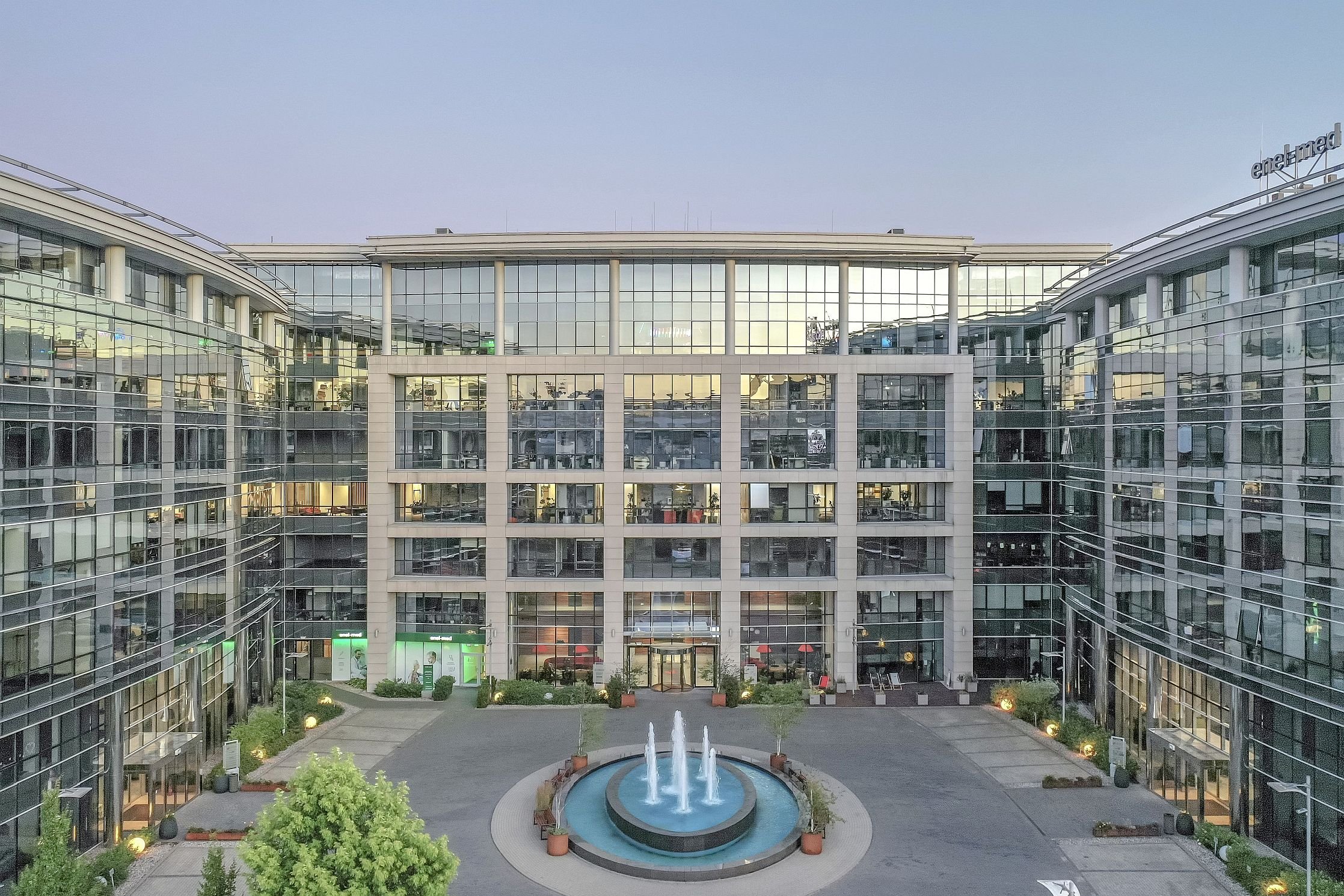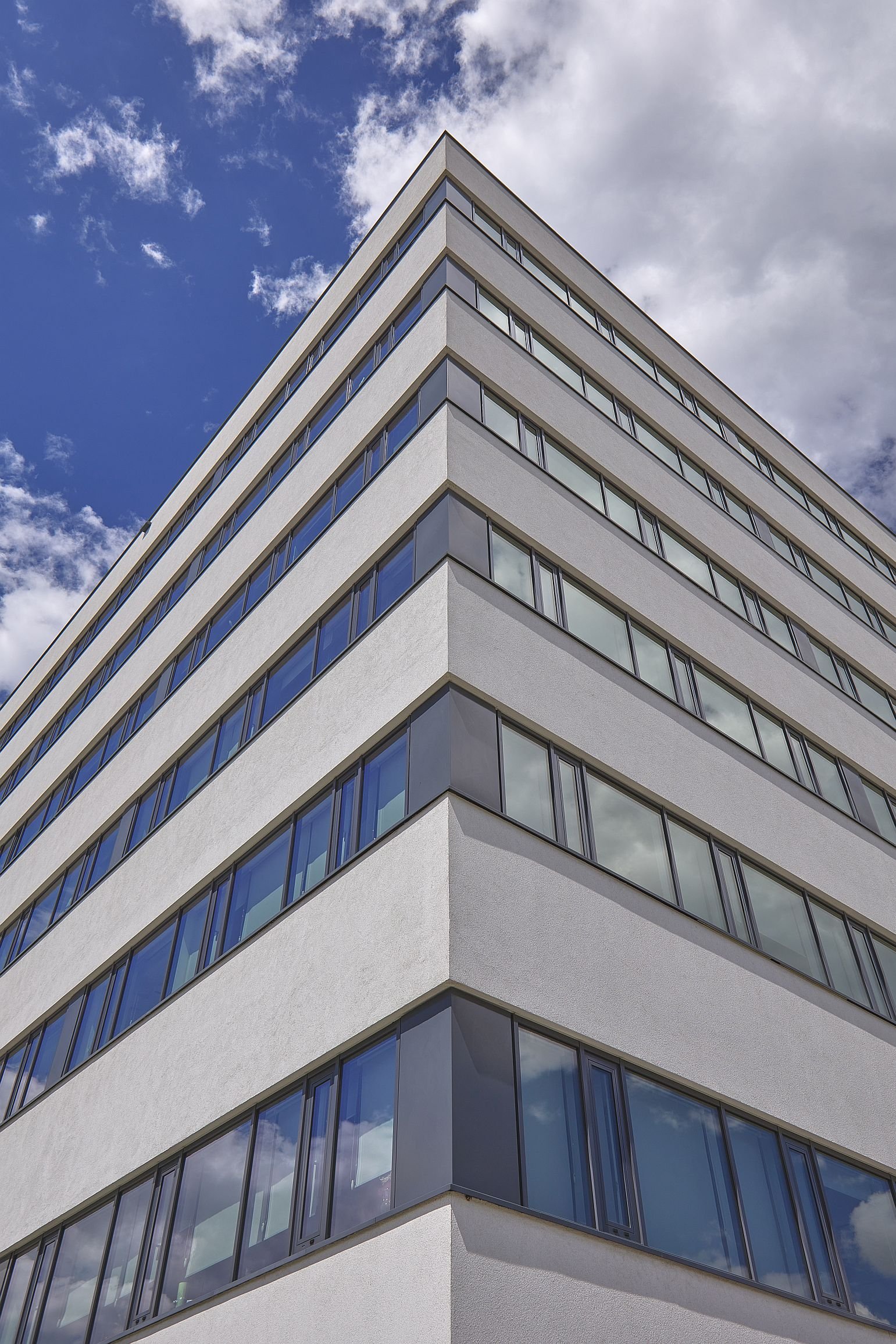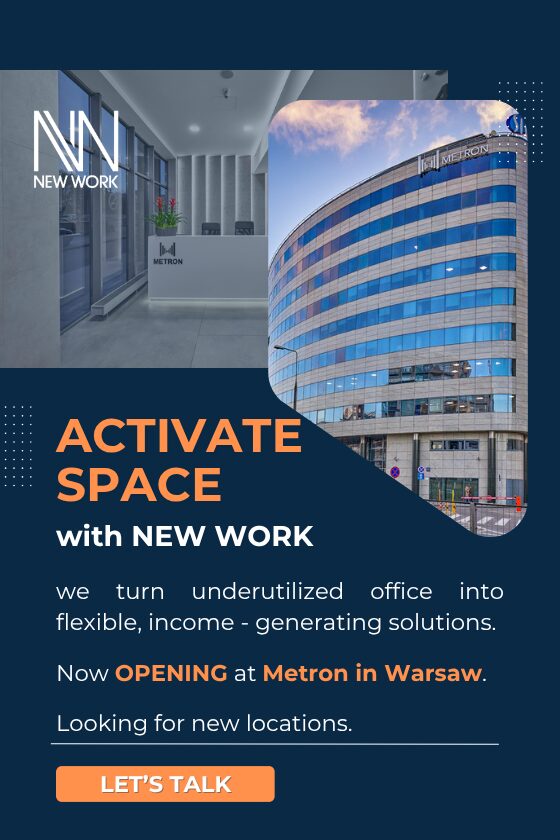Nearly 60 percent of the commenced office space in Warsaw is concentrated in the City Center West office subzone, within the administrative boundaries of the Wola district. It comprises office complexes and buildings that are open to people and the city, sustainable and built using the latest technologies. Attractive and multifunctional. Interestingly enough, more than 85 percent of the office stock in Wola has been BREEAM or LEED-certified, says Joanna Bartosiewicz, Senior Associate, Office Tenant Representation, Newmark Polska.
The City Center West attracts tenants and the biggest developers in Poland. Its great advantages include the immediate vicinity of the city centre and excellent transport connections thanks to a metro line, tram services, many bus lines, and more.
After the period of home office, organisations are targeting attractive buildings with access to services and trendy places to bring the best talent on the market back to the office. They want their offices to be user-friendly, diverse and interesting.
“This is what they look for and can find in Wola, which is growing sustainably and in line with the concept of a 15-minute city where office buildings are part of the whole urban fabric, not just buildings behind a fence with a guarded gate. Some projects such as Norblin Factory and Browary Warszawskie are like small self-contained cities. The former has, in addition to 40,000 sqm of class-A office space, retail stores, restaurants, cafés, a boutique cinema, an eco-bazaar and even a museum. Browary Warszawskie also offers luxury apartments, flats, apartments in PRS and penthouses,” says Joanna Bartosiewicz.
Office buildings spring up near metro stations
One of the key milestones in the growth of the office market in Wola was the completion of the first phase of the second metro line in 2015 and successive stations in later years. According to Newmark Polska, the office stock of the City Center West – an area delineated by al. Jana Pawła II/ul. Chałubińskiego, al. Solidarności, Koszykowa and Karolkowa streets – has increased by 145 per cent since 2014. The strongest growth was recorded in 2020, with almost 230,000 sqm of new office space delivered there through such projects as the Mennica Legacy Tower, The Warsaw Hub, Chmielna 89 and Browary Warszawskie (two of its three office buildings).
Developers do not give up on Wola
Wola’s office stock stands at 1,110,000 sqm, of which almost 477,000 sqm is located in the vicinity of Daszyńskiego Roundabout, the largest concentration of office buildings in the area. Similarly to the whole capital, the City Center West has seen a contraction in development activity in the past year, with no new office completions in the district in the year to date. However, Joanna Bartosiewicz says there is plenty of office space under construction – 163,800 sqm. “This volume accounts for nearly 60 per cent of the total development under construction in the capital. Wola is one of the fastest-growing business centres in Warsaw, with all the biggest developers already being present there. Skanska’s Studio B (16,200 sqm), which is scheduled for completion this year, will be the first project to be delivered, but most of the office stock under construction is expected to come on stream in late 2024 or early 2025,” explains Joanna Bartosiewicz.
The Bridge is one of the most awaited projects in Wola. It is being developed by Ghelamco near the junction of Towarowa and Grzybowska streets, close to Plac Europejski, and will provide 47,000 sqm of office space spread over 42 floors. It is scheduled for completion in the first quarter of 2025. Tenants are also eyeing Towarowa 22, which is being built by AFI Europe and Echo Investment in a quarter delineated by Towarowa, Pańska and Miedziana streets. The complex will provide offices, apartments and service space. It will be developed in phases, with the first two buildings – one residential and one office building – also being scheduled for delivery in 2025. Other notable projects underway include LIXA’s office buildings D and E (a total of 28,500 sqm), The Form (26,000 sqm) and Vibe 1 (15,000 sqm). Right next to the City Center West office zone, STRABAG Real Estate is building its flagship office project: the Upper One (36,000 sqm), which is being constructed on the site of the demolished Atrium International.
A district that is open to people
While skyscrapers are springing up near Daszyński Roundabout and further westwards, Warsaw inhabitants are wondering whether this would lead to a repetition of the situation that took place in Służewiec, which used to be impassable during the day due to traffic jams and go quiet with lights off after 6 pm and at weekends.
Analysts from Newmark Polska, however, assure that both the municipality and developers have learnt their lesson. “Not only are the new buildings in the City Center West multifunctional but they are also being designed to make people want to be in them, go to a café or restaurant, use services or simply relax there. This is a huge difference between Służewiec and Wola and the latter’s strong advantage, I think. Residential projects are being developed here alongside offices, cultural and retail facilities,” says Joanna Bartosiewicz.
This view on urban planning is shared by Krzysztof Strzałkowski, Mayor of Wola. “Commercial buildings in a modern city cannot exist in isolation. If your focus is on one type of development, even the best project may be detrimental by being cut off from its surroundings. This is why we are placing so much importance on the diversification of construction projects across Wola so that investors tapping into the great potential of the district contribute to its growth. Wola is closest to the concept of a 15-minute city – today’s ideal. In a large part of the district, you can live, work and spend your free time without having to walk longer than a quarter of an hour. It has practically all public services and a very diversified demographic. And if you add to this access to educational and leisure facilities, you can hardly think of a better place in Warsaw,” says Krzysztof Strzałkowski.
Price for the quality
An excellent location, proximity to the city centre and high-quality office projects developed in the area are continually adding to the prestige of the Wola office zone. The district is no longer the cheaper alternative it used to be eight or 10 years ago. Quality comes at a price – headline rents in the City Center West are as high as around EUR 27 per sqm per month. The highest are in the vicinity of Daszyńskiego Roundabout. Tenants, however, are not discouraged by them. Many companies are relocating here from other districts, including Industrial Służewiec. Occupiers’ interest focuses mostly on offices near Daszyńskiego Roundabout, where vacancy rates are very low, standing at 4 per cent. By comparison, the vacancy rate for the entire district is 7.7 per cent, with the average for Warsaw at 11.4 per cent, reveals Newmark Polska.
“Contrary to appearances, companies do not look for offices in the cheapest locations. Of course, they are careful with money and optimize costs, very often downsizing offices and ensuring that leases include appropriate provisions on service charges, but not opting for cheaper locations. Companies want to grow in appealing locations and in modern ESG-compliant buildings. Wola stands out for this against the rest of the city. More than 85 per cent of its office stock has been BREEAM or LEED certified at various levels, translating into nearly 950,000 sqm of modern office space. This means that Wola has the largest percentage of green office stock and the largest number of square metres of green office space in Warsaw,” says Joanna Bartosiewicz.
Towards Kasprzaka Street and Zawiszy Roundabout
No wonder that analysts from Newmark Polska expect to see more relocations to Wola. “Choosing an office is a strategic business decision for any company. Office take-up in Wola for the first six months of the year hit 69,400 sqm, of which approximately 40% was leased through relocations (both inside and into the zone). Demand came from various sectors, including pharmaceutical, financial, banking, IT, business services, large law firms and insurance companies. Providers of serviced offices which are extremely popular in the district also want to grow here,” says Joanna Bartosiewicz.
The largest leases for office space in existing buildings and projects under construction have been signed in the year to date by Unum Życie in Studio B (5,200 sqm), Sanofi Aventis in LIXA E (3,200 sqm) and coworking office provider Omni Office in Warsaw UNIT (3,200 sqm). Companies that chose Wola years ago usually decide to stay on in the district by opting for a newer nearby building or renegotiating their lease. This year’s largest renewals were completed by Accenture (8,800 sqm) and SIX Global Services (2,600 sqm) – both for space in Proximo II – and by a confidential tenant from the business services sector in Warsaw Spire A (5,950 sqm).
“By delivering new quality stock meeting employee needs and occupier requirements, Wola is likely to see its office market grow further. The direction in which it is growing is aligned with the latest trends such as sustainability, co-sharing, connectivity and diversity. Analysis of plot availability and planned projects shows that office construction activity is expected to spread towards Zawiszy Roundabout and Kasprzaka Street,” concludes Joanna Bartosiewicz.







